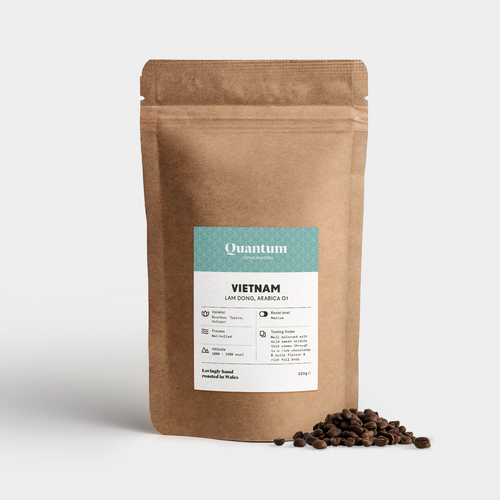Did you know that Vietnam held its place as the second largest producer of coffee in the world? ‘Squeezed’ between Brazil and Colombia in 2018, Vietnam produced close to 1.7 million metric tonnes of coffee annually. If you think that back in 1975 (at the end of the Vietnam war) annual production was in region of 6,000 metric tonnes; that is a rise of spectacular dimensions.

Image: Ha Long, Vietnam (image credit: @ammiengo)
VIETNAM’s COFFEE STORY
Vietnam was introduced to coffee for the first time by the French colonists during the 19th century. Vietnam was manly known for its Robusta coffee cultivation and it’s no surprise, as Robusta still accounts for 95% of Vietnam’s coffee output. With Vietnam’s private farming opening up after WWII and the Vietnam War, more business opportunities were created, and the country’s economy began gaining some security in the late 1980's. Since then, coffee-based agriculture has generated close to 3 million jobs. This rapid annual growth in the coffee industry (20%-30% since the 90’s) has incredibly been credited as being the key factor to lifting up to 50% of the population out of poverty.
Robusta it is still principally Robusta that is grown, and Vietnam has made a name of itself supplying big commercials roasters (mega roasters’ Robusta requirements are huge due to the commercial level of their business).

Image: Coffee, Vietnam (image credit: @eliassorey)
VIETNAM’s ARABICA COFFEE
Yes, you heard right! If you have already heard about Vietnam and coffee, then you would know and expect coffee from Vietnam to be Robusta. If you read the above, then you know that their main coffee output has and still is Robusta coffee.
However, this has changed in the latter years and Vietnam has eased its way into the speciality coffee. The rise of speciality coffee globally, and the demand for more expensive – and more desirable Arabica alongside an albeit small speciality scene being introduced in Vietnam means that Vietnamese farmers have started to embrace growing Arabica instead of Robusta.
So, what does that mean? Well, it means that Vietnam is gradually and methodically becoming a valid contender within the Arabica speciality industry. The push for high quality coffee is greater than ever and in the last couple of years, it has begun to take the Vietnamese coffee industry by storm.
Growing Arabica coffee, especially of quality, is no easy task for any grower but Arabica coffee tree grow shorter than Robusta and need a higher elevation. This has limitation in the trees being able to be planted easily across the Vietnamese landscape. The Arabica trees are therefore finding their place and rooting themselves in the north-western part of the country and the central highlands in the south.
Arabica coffee production in Vietnam is still small scale; the lack of technology, poor logistics, lack of available training, marketing barriers have all been aspects that have delayed the Arabica coffee growth in the country. However, progress is being made and there are always passionate, hard-working, and committed people that make things happen and this is case for the Vietnamese speciality coffee industry.
This passion and progress have resulted in some wonderful Arabica coffees being exported which shows that the future for Vietnamese speciality coffee is bright because only the best beans make it!

Image: Da Lat, Vietnam (image credit: @thinhnguyen)
OUR COFFEE
Grown at an altitude between 1000 – 1600 masl, Lam Dong is renowned for its Arabica coffee production. Stunning views and carved hillsides reveal over 23,000 hectares totally devoted to Arabica plantations.
The capital of the province, Da Lat City carries memoires of Indochina and still preserves the colonial charm of an Asiatic-French fusion and is (oh I guess was) a popular tourist destination. It is located in the Central Highlands region of Vietnam and its economy is based largely on agriculture and apart from coffee, tea and vegetables are the mail agricultural products.
Harvesting of the coffee is done by hand and is labour-intensive. Selective picking is the method used, instead of the strip picking method used for Robusta, where all the cherries ripe and unripe are removed from the tree at once. The process is a wet-hulled process similar to the Gilling Basah method used in Indonesia, mainly Sumatran coffees.
So, our coffee:
Vietnam Lam Dong, Arabica G1
PROCESS: Wet hulling
ALTITUDE: 1000-1600 masl
VARIETALS: Bourbon, Catimor, Typica
TASTING NOTES: Well-balanced with mild sweet acidity that comes through to a rich chocolatey & nutty flavour & rich full body
GRAB YOUR BAG HERE


